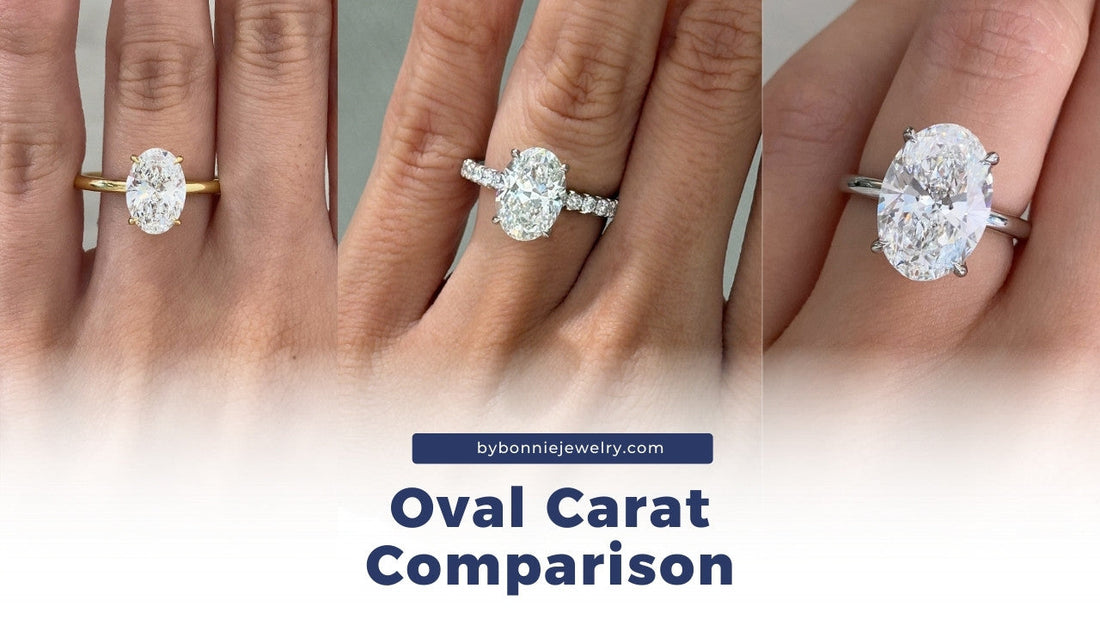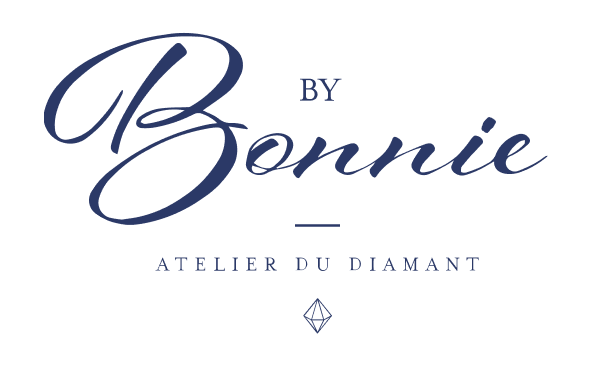
Oval Diamond Carat Size Comparison: From 1.50ct To 4.50ct!
Share
You asked, and I delivered! This is the ultimate oval diamond carat size comparison—on hand, side by side, so you can see exactly what each carat weight looks like. I've done this for round diamonds before (from 1ct to 4ct), but this time, we're focusing on oval cuts between 1.5ct and 4.5ct. And yes, this is just part one! If you want me to go beyond 4ct or even smaller than 1.5ct, let me know, I'll add it to the pipeline!
Now, if you're new here, welcome to our By Bonnie blogs, where we talk about all things diamonds! Trust me, you won’t find all this information in one place anywhere else. I take the time to break everything down for you, so let’s get started!
1.5ct vs. 2ct Oval Diamonds
Before we dive in, if you haven’t read my oval diamond ratio blog, pause right now and go check that out. Seriously—carat weight alone doesn’t determine finger coverage, especially for fancy shapes like ovals. The ratio (length divided by width) plays a huge role. Some ovals are longer and more slender, while others are wider and "chubbier."
Here’s what I’m comparing today:
- 1.5ct vs. 2ct
- 2ct vs. 2.25ct
- 2.5ct vs. 3ct
- 3ct vs. 3.5ct
- 3.75ct vs. 4.5ct
From 2ct to 2.5ct, the difference is subtle, but once you jump from 2ct to 3ct, that’s when you’ll really start to see a big increase in size.
And between 3ct and 4ct? Huge difference.
Choosing the Right Carat for Your Lifestyle
Let’s talk about lifestyle. A diamond isn’t just about size; it’s about how it fits into your life. Sure, bigger diamonds sparkle more (we love that!), but you also want a ring that feels comfortable and suits your daily routine. That’s why I always tell my clients—don’t just think about carat weight. Think about how the ring will look and feel on your hand.
And speaking of trends, more couples are now shopping for engagement rings together! I love this shift—because, just like planning a trip or buying a house, choosing an engagement ring is a big decision. It should be thoughtful, intentional, and something you’ll love forever.
3ct vs. 4ct: What’s the Difference?
Now, let’s compare 3ct, 3.25ct, 3.5ct, and 3.75ct—up to 4.5ct.
At this size, you’ll really start seeing noticeable changes in the diamond’s length and presence on the finger.
If you’re torn between a 4ct round and a 4ct oval, just know that an oval will always have more finger coverage. Think of an oval as a stretched-out round—it gives you that extra length and a more elongated look.
Metal Choice Matters!
White gold, yellow gold, platinum—which one? Here’s my take: After COVID, with all the extra hand washing, I’ve noticed a lot of clients switching to platinum.
Unlike white gold, which is mixed with alloys that wear off over time, platinum doesn’t tarnish or turn slightly yellow. It’s a great long-term choice if you love that bright white look.
Band Style: Solitaire or Pave?
This is another major decision. Some clients love a simple solitaire, while others want extra diamonds on the band. I recently designed a ring with a wider wedding band and chunky diamonds—no pavé, just strong, sharp prongs for a more structured look.
It was stunning, and it sat flush with a flat wedding band perfectly. So think about how your engagement ring and wedding band will pair together when choosing your setting!
Final Thoughts: Do You Want Part Two?
We just compared 1.5ct to 4.5ct, but I need your votes! Do you want to see part two? Maybe a different shape? Let me know in the comments. And if you found this helpful, share it with a friend who’s in the market for a diamond.
Make sure you’re following By Bonnie Jewelry on Instagram for your daily dose of diamonds. Thank you for all the love and support—I can’t wait to see you in the next blog!

